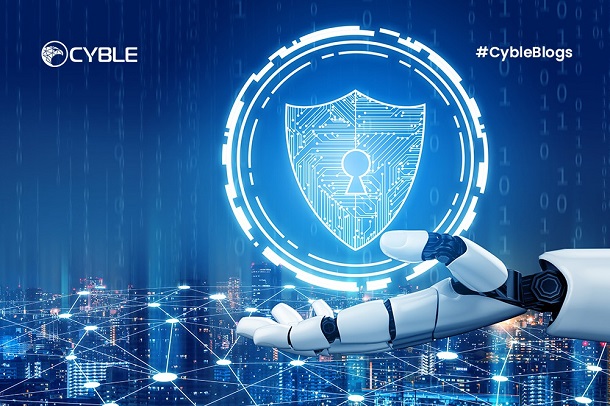Understanding Cyber Threats: Unraveling the Types of Cyber Attacks and the Role of Appsealing

Introduction
In an increasingly digitized world, where technology is omnipresent, the risk of cyber attacks has become a ubiquitous concern. As businesses and individuals rely more on digital platforms, the potential for malicious actors to exploit vulnerabilities has also grown. This aims to shed light on various types of cyber attacks, with a special focus on the importance of cybersecurity measures like Appsealing.
I. The Landscape of Cyber Threats
1.1 Phishing Attacks
Phishing attacks are one of the most common and deceptive cyber threats. In this type of attack, malicious actors use fraudulent emails, messages, or websites to trick individuals into revealing sensitive information such as passwords or financial details. Appsealing plays a crucial role in preventing these attacks by providing an additional layer of security for mobile applications.
1.2 Malware Infections
Malware, short for malicious software, encompasses a variety of threats, including viruses, worms, Trojans, and ransomware. These programs are designed to disrupt, damage, or gain unauthorized access to computer systems. Appsealing helps in detecting and blocking malware by implementing advanced security protocols within mobile applications.
II. The Role of Appsealing in Cybersecurity
2.1 Appsealing Overview
Appsealing is a robust cybersecurity solution designed to protect mobile applications from a wide range of cyber threats. By employing techniques such as code obfuscation, tamper detection, and runtime application self-protection (RASP), Appsealing fortifies the security posture of mobile apps, making them more resilient against cyber attacks.
2.2 Code Obfuscation
Code obfuscation is a key feature of Appsealing, which involves transforming the source code of an application into a form that is difficult for humans to understand. This makes reverse engineering attempts by cybercriminals more challenging, thereby safeguarding the intellectual property and sensitive information embedded in the application.
2.3 Tamper Detection
Appsealing incorporates tamper detection mechanisms that actively monitor the integrity of the mobile application. If any unauthorized modifications or tampering attempts are detected, the system can take immediate action, such as shutting down the application or alerting administrators, preventing potential exploitation by cyber attackers.
2.4 Runtime Application Self-Protection
RASP is a proactive security measure employed by Appsealing that dynamically protects mobile applications during runtime. This adaptive approach enables the system to identify and respond to potential threats in real-time, ensuring that the application remains secure even as cyber threats evolve.
III. Common Cyber Threats and Appsealing Mitigations
3.1 Man-in-the-Middle (MitM) Attacks
MitM attacks involve intercepting and potentially altering the communication between two parties without their knowledge. Appsealing combats MitM attacks by implementing secure communication protocols and encryption, ensuring that data exchanged between the mobile application and its servers remains confidential and tamper-proof.
3.2 DDoS Attacks
Distributed Denial of Service (DDoS) attacks aim to overwhelm a system or network with an excessive amount of traffic, rendering it inaccessible to legitimate users. Appsealing provides DDoS mitigation capabilities by implementing traffic filtering and load balancing, ensuring the availability and stability of mobile applications even during intense cyber attacks.
3.3 Credential Stuffing
Credential stuffing attacks occur when cybercriminals use stolen usernames and passwords from one platform to gain unauthorized access to another. Appsealing employs multi-factor authentication (MFA) and secure credential storage to thwart these attacks, requiring additional verification beyond traditional username and password combinations.
IV. Emerging Cyber Threats and Appsealing’s Adaptive Measures
4.1 Zero-Day Exploits
Zero-day exploits target vulnerabilities in software that are unknown to the vendor or developers. These attacks can be particularly devastating because they take advantage of security gaps before patches or updates are available. Appsealing’s proactive approach and continuous monitoring help identify and mitigate potential zero-day exploits by dynamically adapting to evolving threat landscapes.
4.2 AI-Powered Attacks
As artificial intelligence (AI) becomes more prevalent, cybercriminals are leveraging AI to orchestrate attacks with greater efficiency and precision. Appsealing incorporates AI-driven anomaly detection to recognize patterns indicative of malicious activities, providing an additional layer of defense against AI-powered threats.
V. Appsealing Implementation Best Practices
5.1 Regular Updates and Patching
Keeping Appsealing and the underlying mobile application up-to-date is crucial in maintaining a strong defense against emerging threats. Regular updates and patching ensure that the security measures are aligned with the latest cybersecurity standards and address any newly discovered vulnerabilities.
5.2 User Education and Awareness
While Appsealing serves as a robust technological barrier against cyber threats, user education remains a critical aspect of cybersecurity. Educating users about the importance of strong passwords, avoiding suspicious links, and being cautious with app permissions can significantly enhance the overall security posture of mobile applications.
5.3 Collaborative Security Measures
Appsealing is most effective when integrated into a comprehensive cybersecurity strategy. Collaborating with other security solutions, such as firewalls, antivirus software, and network monitoring tools, creates a layered defense mechanism that mitigates risks at various levels, providing a holistic approach to cybersecurity.
VI. The Future of Cybersecurity: Innovations and Challenges
6.1 Blockchain Technology for Enhanced Security
The integration of blockchain technology into mobile applications holds promise for enhancing security. Appsealing, in collaboration with blockchain, can provide a decentralized and tamper-resistant environment, making it significantly more challenging for attackers to compromise the integrity of the application.
6.2 Privacy Concerns and Data Protection
With the increasing digitization of personal information, privacy concerns and data protection are paramount. Appsealing plays a pivotal role in ensuring that user data is handled with the utmost care, implementing encryption and secure storage practices to safeguard sensitive information from unauthorized access.
VII. Regulatory Compliance and Appsealing: A Synergistic Approach
7.1 GDPR and Data Protection
Regulatory compliance is a critical aspect of cybersecurity, especially in the era of data-driven applications. Appsealing aids in compliance with regulations such as the General Data Protection Regulation (GDPR) by ensuring that user data is handled by privacy laws. The encryption and secure storage features of Appsealing contribute significantly to maintaining GDPR compliance.
7.2 Industry-Specific Regulations
Different industries often have specific regulations governing the handling of sensitive data. Appsealing’s customizable security features make it adaptable to industry-specific compliance requirements, providing a tailored approach to cybersecurity that aligns with the unique needs of businesses operating in various sectors.
Conclusion
Appsealing, with its multifaceted approach to mobile application security, stands as a formidable defense against a myriad of cyber threats. As technology continues to advance, the collaboration between cybersecurity solutions like Appsealing and vigilant users and organizations becomes crucial in creating a resilient digital landscape. By staying informed, adopting best practices, and leveraging advanced security tools, we can collectively build a secure and trustworthy digital future.



